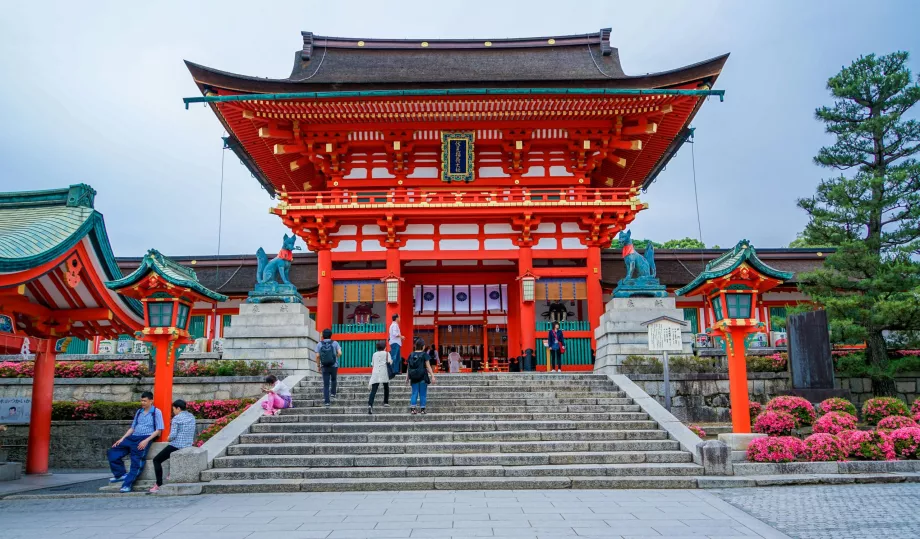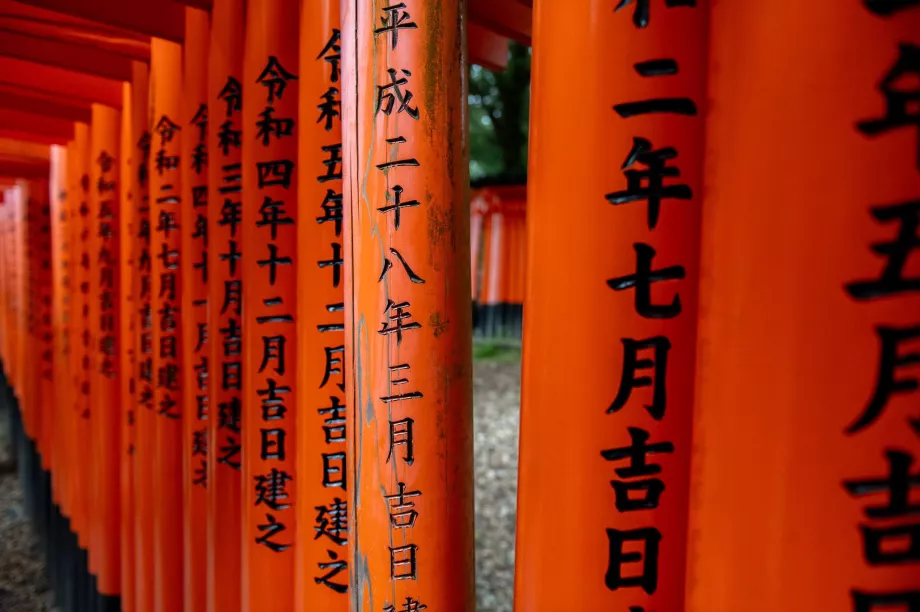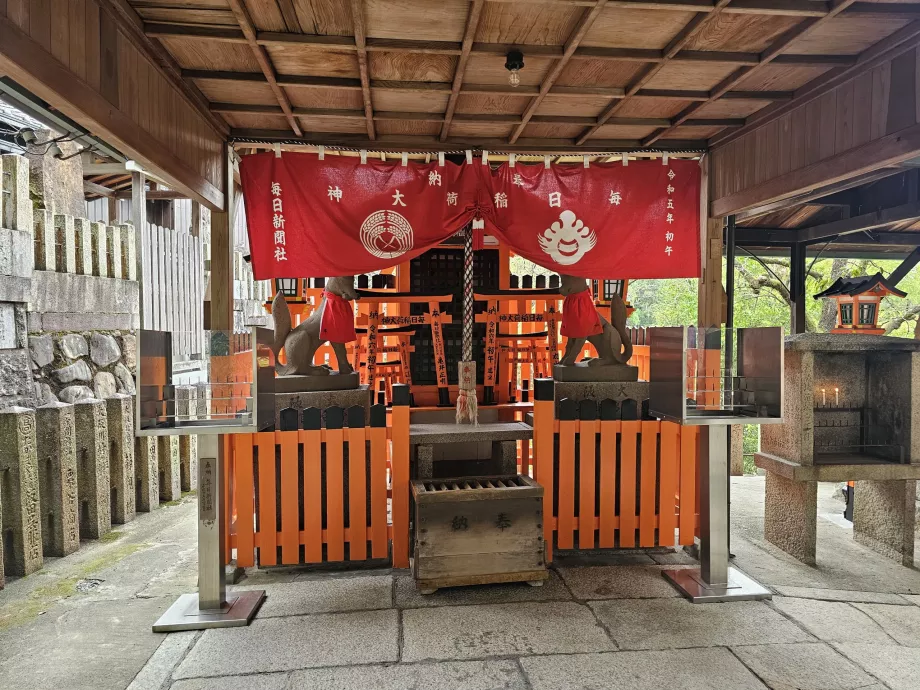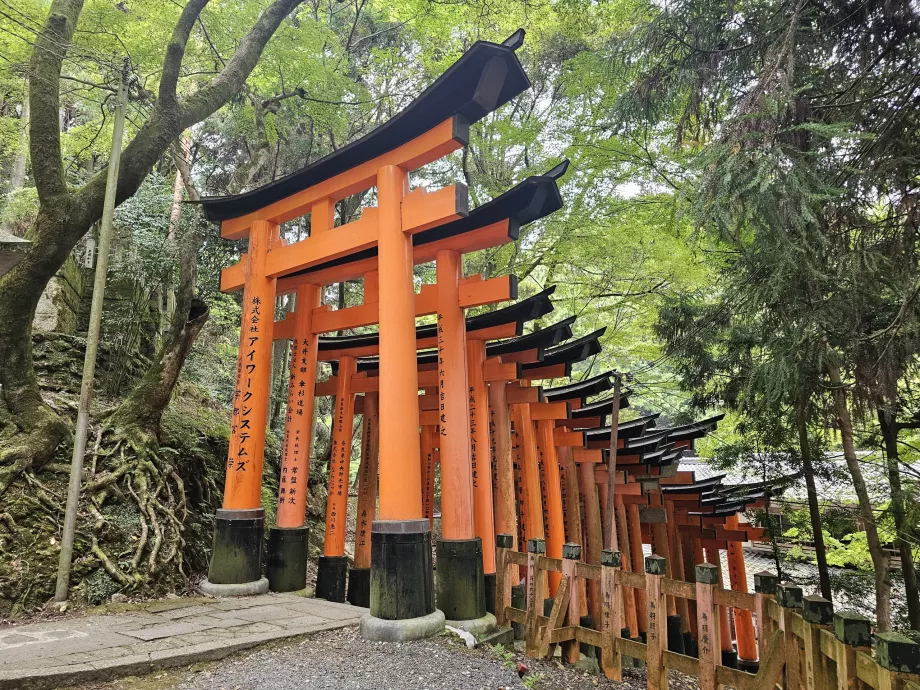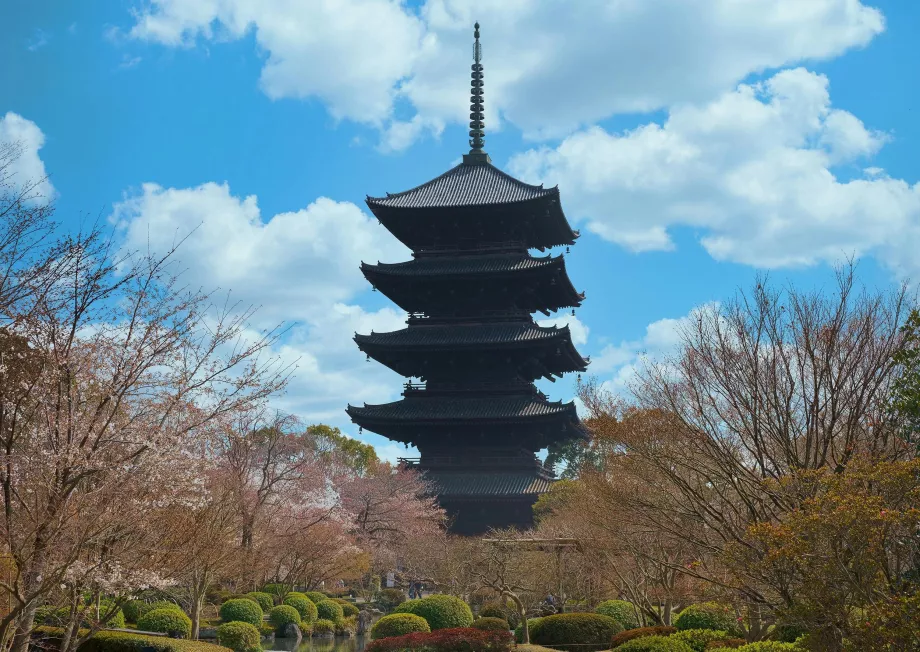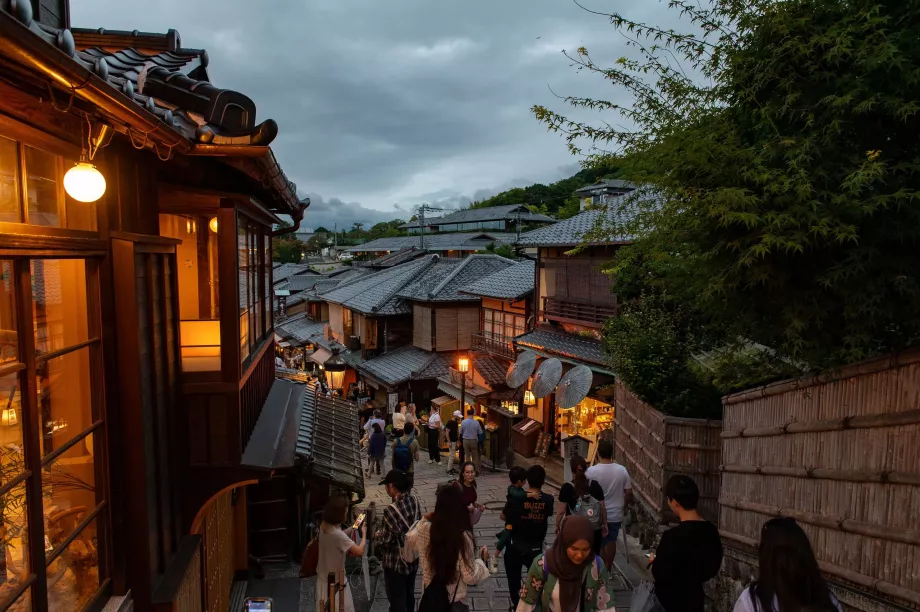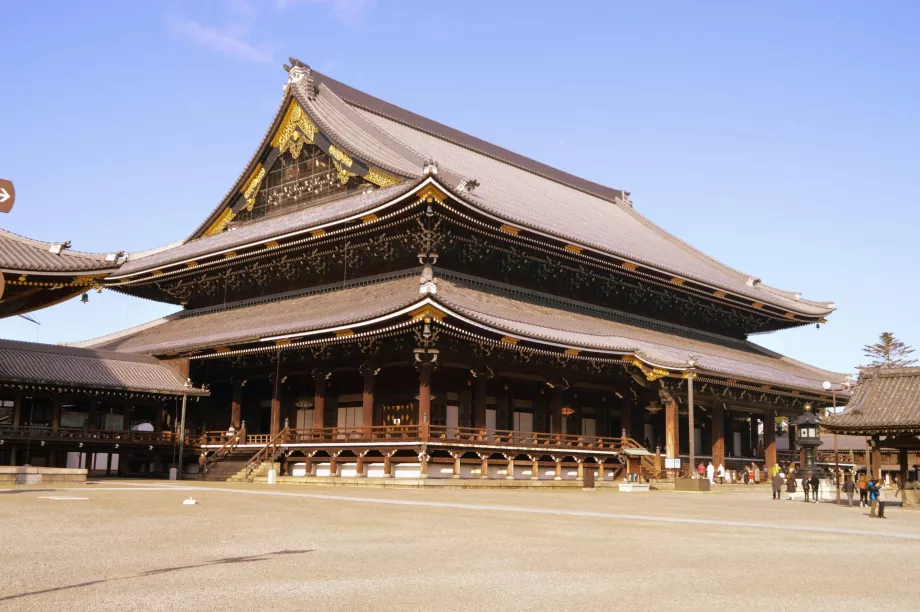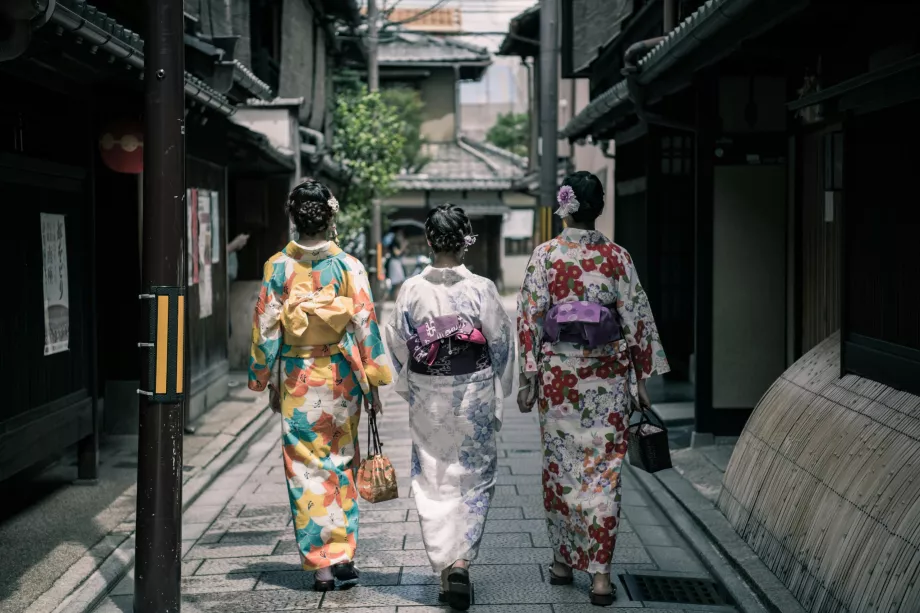Fushimi Inari-taisha
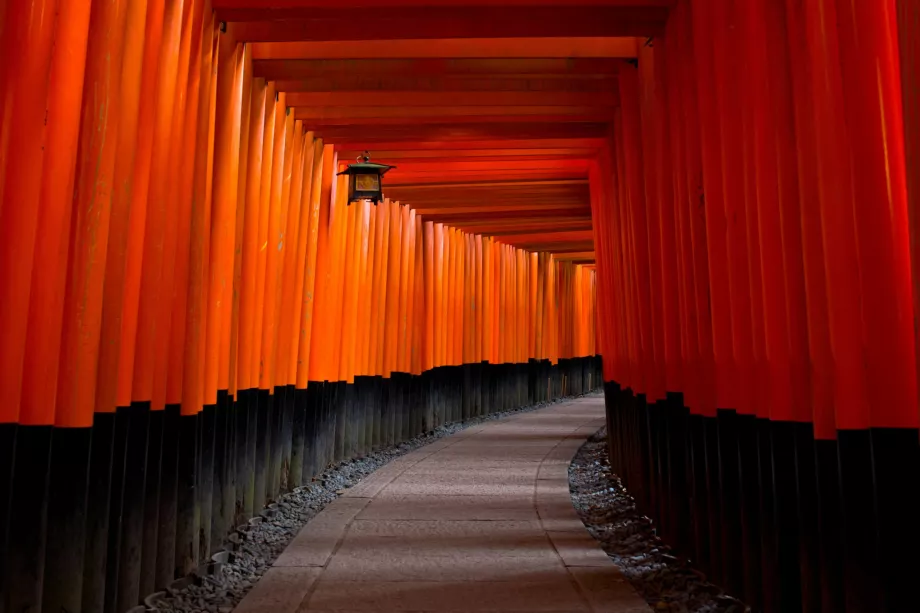
The most famous Shinto shrine in Japan and one of the most visited places in the whole country is located at the foot of Inariyama Hill.
The Fushimi Inari Shrine is best known for its more than 10,000 thousand iconic black and red torii gates, under which walkways lead up the sacred mountain.
View the 10 best hotels in Kyoto
The shrine itself is one of the largest in Japan and is located at the bottom of a hill near the train stations.
From the shrine to the 233-metre-high sacred hill of Inariuyama, there are walking trails lined with red torii gates.
Why are there over 10,000 gates torii?
Each Shinto shrine is usually marked by one red torii gate. Kyoto's Fushimi Inari Shrine, however, has over 10,000 of them, and new ones are added every year.
The shrine is dedicated to the deity Inari, who is seen as the patron of prosperity, industry and merchants.
And it is merchants, businesses, and private individuals who worship the Inari gods by building new and new torii gates with wishes of abundance inscribed on the gates.
This tradition has been maintained for many centuries and continues to this day. Typically, amounts from 500 000 jpy upwards are paid for a single torii gate.
In addition to the large torii gates, you may notice small models of these gates brought by individuals at many of the small shrines along the way.
Also ubiquitous are statues of foxes with a key or a scroll of parchment in their mouths, which are seen as messengers of the gods.
Walking route to the sacred mountain
From the shrine, paths lined with torii gates lead to the sacred peak, and it is these paths that attract the most tourists.
The path to the top is about 2 km long and the elevation is about 200 meters. There are many steps to climb, but there are several refreshment shops along the way.
The average hiker takes about 1.5 hours to get to the top and down. Take a look at the route map.
Entrance fees and opening hours
The sanctuary and the trails below the torii gates are accessible 24/7.
In the sections outside the torii gates, the trails are illuminated with lamps.
There is no admission fee to enter the shrine or the hiking trails.
How to get there
The shrine lies to the southeast of the centre and is easily accessible by public transport.
There are two railway stations of different train lines near the shrine:
- Inari (closer to the shrine - about 90 metres) - JR and JR-WEST trains
- Fushimi-Inari (further from the shrine - about 150 metres) - Keihan Railway trains
Kyoto Station
Kyoto Station is located in the city centre and all JR shinkansen and long-distance trains run from here.
At the station you can change to the Green Line subway and many bus lines to directions all over Kyoto. A map of bus and subway lines can be found here.
- Bus 5
- Travel time - 15 minutes
- Ticket price - 230 jpy
- A full day bus + subway ticket is valid here
- Not valid for JR Pass or Kansai Railway Pass
- JR trains
- Travel time - 6 minutes
- Ticket price - 150 jpy
- JR Pass and JR-WEST Pass apply here
- Not valid here for bus + subway day pass or Kansai Railway Pass
Gion District
The popular tourist district of Gion is located 6 km north.
- Keihan Railway train to Gijon-Shijo station
- Travel time - 8 minutes
- Ticket price - 220 jpy
- JR Pass and JR-WEST Pass are not valid here, nor is the full day bus + metro pass
- The Kansai Railway Pass is valid here
- Bus 5 to Nanajo Keihan-mae stop and then bus 86, 106, 206
- Travel time - 30 minutes
- Ticket price - 460 jpy
- All day bus + subway ticket valid here
- Not valid for JR Pass or Kansai Railway Pass
Osaka
If you are heading to the shrine directly from Osaka City, use this connection:
- JR trains to Kyoto Station + JR "Special Rapid Service" trains to Osaka Station.
- Travel time - 48 minutes
- Ticket price - 860 jpy
- JR Pass and JR-WEST Pass valid here
- Neither the all-day bus + subway pass nor the Kansai Railway Pass are valid here
- Keihan Railway trains without transfer to Yodoyabashi or Nakanoshima Station
- Travel time - 50-75 minutes
- Ticket price. 420 jpy
- JR Pass and JR-WEST Pass are not valid here, nor is the full day bus + subway pass
- The Kansai Railway Pass is valid here
- Only "Local", "Sub-Express" and "Express" trains stop at Fushimi-Inari station. "Limited" "RAKU RAKU" or "Rapid Express" trains do not stop at the station
Nara
The shrine also has a direct connection with the popular city of Nara.
- JR trains
- Journey time - 60 minutes
- Ticket price - 680 jpy
- JR Pass and JR-WEST Pass valid here
- Not valid on the all-day bus + subway pass or the Kansai Railway Pass
Accommodation at Fushimi Inari
For many travelers, the shrine is the main destination for a visit in Kyoto and so it may make sense to stay nearby, especially if you are planning a day trip from Kyoto to Nara, for example.
You will find mainly small hotels and guesthouses here.
What to see around
Discover all the places to see in Kyoto.
Any questions left?
If you have any questions or comments about the article...

